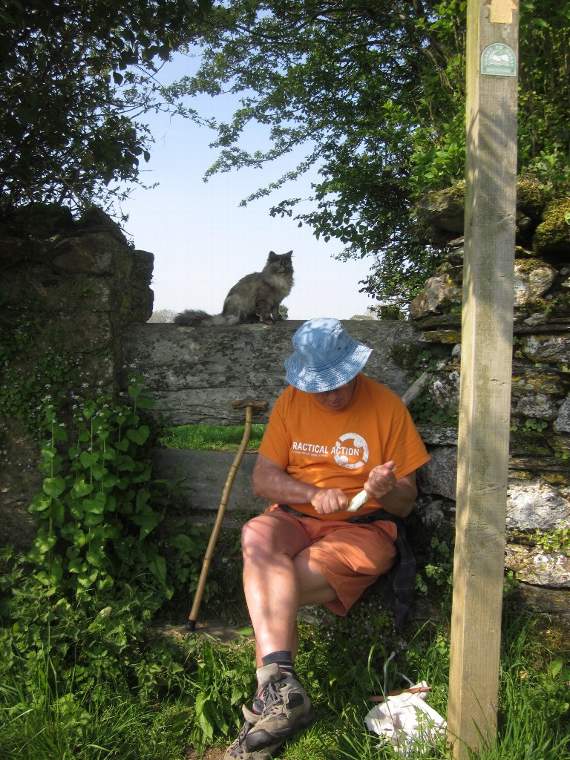THE destruction of ancient stiles along the Erme Plym Trail and their replacement with shiny new metal gates has been greeted with disbelief and sadness by a local resident.
But on a recent stroll the academic, who is married to scientist and broadcaster Adam Hart-Davis, was shocked to see that a nearby stile had been demolished. The crossing in question, very old and made up of stone steps with a vertical slab on top, had been smashed up, removed, and replaced with a much more utilitarian metal gate.
A number of stiles along the stretch of path, north east of Ermington have similarly been destroyed and replaced with the gates. In a few spots improvements have been made to drainage, or dangerous steps replaced, and Prof Blackmore accepts the new gates make the path much easier to use. But she believes people should be aware of this ’destruction of our Devon heritage’.
She wrote a short piece on Devon County Council’s actions for the local Ermington parish newsletter, saying: ’We often walk up the nearest field and across an old stile at the top of the hill. Now it’s gone. There was no warning and yet now this quirky old construction of local stone has been smashed up and replaced by a metal gate.
’I suppose it is easier for people to walk through but to me it’s incredibly sad; a little piece of Devon country history destroyed. Along this stretch of the trail three more have gone, all different and all interesting in their own odd ways.’
And she asked: ’Couldn’t the gates sometimes have been put next to the old stiles instead of destroying them? Is it happening all over the county? Is there anything we can do to save these little bits of our heritage?’
A Devon County Council spokesman reassured residents it was not planning to replace all stiles with metal gates. They said: ’The two stone stiles we have replaced were extremely difficult to use and clearly an obstruction to many people.
’One set of steps, next to a metal field gate in particular was a potential safety risk; the steps were slippery, overgrown and had no handrail on one side.
’Generally we seek to ensure that the crossing of field boundaries uses the least restrictive option.
’While we are not seeking to replace all stiles with metal gates, the gates we do use meet the British Standard for accessibility and are functional, lower maintenance than the wooden alternative, and less prone to vandalism.’
The spokesman added: ’Stiles and gates are normally the landowner’s responsibility and Devon County Council has no power to insist that a stile is replaced with a gate. We work closely with landowners to try to improve accessibility.
’It is not always the case that accessibility will trump aesthetics. For example, with some stone stiles there is a clear local heritage argument to not replace them.
’In such instances, and where space, landowners and budget allow, it is sometimes possible to site a gate near to the structure and to divert the path to the new gate, leaving the old structure intact.’





Comments
This article has no comments yet. Be the first to leave a comment.